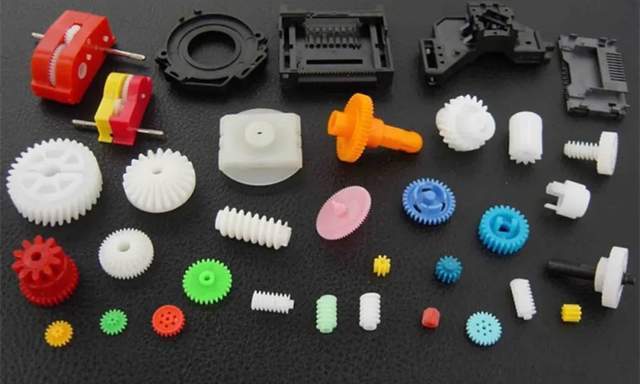1. Plastic classification
Plastics can be roughly divided into general plastics, engineering plastics and special engineering plastics.

General-purpose plastics refer to commonly used plastics with large output, wide range of uses, good molding properties, and low prices. Such as polyethylene, polypropylene, polyvinyl chloride, polystyrene. They are all thermoplastics. The products made include plastic films, pipes, woven bags and plastic daily necessities. The output and usage of general plastics account for more than 80% of all plastics.
Engineering plastics refer to plastics used in industrial parts. Relatively speaking, they have larger output and wider application range. Mainly include ABS, polycarbonate, nylon, polyformaldehyde, modified polyphenylene ether thermoplastic polyester, etc. Products include TV casings, plastic gears, optical materials, sealing gaskets, etc.
Special engineering plastics, in addition to the characteristics of engineering plastics, have higher comprehensive properties and can be used at temperatures above 150°C for a long time. Also has special functions and special uses. Mainly used in high-tech industries, such as structural materials in atomic energy, rockets, satellites, aerospace, automobiles, electronics and sports equipment. Commonly used special engineering plastics include polyphenylene sulfide (PPS), polyimide (PI), polyetheretherketone (PEEK), liquid crystal polymer (LCP) and polysulfone (PSF).
2. General plastics
Polyethylene (PE)
Polyethylene is the most produced variety in the plastics industry. Polyethylene is an opaque or translucent, light-weight crystalline plastic with excellent low-temperature resistance (the lowest operating temperature can reach -70 ~ -100°C), good electrical insulation, chemical stability, acid, alkali and salt resistance. It is not corroded by similar aqueous solutions, but it should not be wiped or soaked with strong alkaline detergents, and it is not resistant to heat. Polyethylene is suitable for processing by injection molding, blow molding, extrusion and other methods. PE can be divided into: low-density polyethylene LDPE; high-density polyethylene HDPE; linear low-density polyethylene LLDPE according to different densities. Polyethylene is commonly used to make food bags and various containers.
Polypropylene (PP)

Polypropylene is a thermoplastic obtained by polymerizing propylene. It is usually a colorless, translucent solid, odorless and non-toxic, with a density of 0.90 ~ 0.919 g/cm. It is the lightest general-purpose plastic. Its outstanding advantage is that it is resistant to water. It has the characteristics of cooking. It can be soaked in boiling water at 100℃ without deformation or damage. It is corrosion-resistant. Common acid and alkali organic solvents have almost no effect on it. Its strength, rigidity and transparency are better than polyethylene. Its disadvantage is that it is resistant to corrosion. It has poor low-temperature impact and is prone to aging, but it can be improved by modification and addition of additives. There are three production methods of polypropylene: slurry method, liquid phase bulk method and gas phase method. Polypropylene is mostly used in tableware.
Polyvinyl chloride (PVC)
Polyvinyl chloride is a plastic polymerized from vinyl chloride. It is bright-colored, corrosion-resistant, strong and durable. Its hardness can be greatly changed by adding plasticizers. The production methods of polyvinyl chloride include suspension polymerization, emulsion polymerization and bulk polymerization, with suspension polymerization being the main method. Since some toxic auxiliary materials such as plasticizers and anti-aging agents are added during the manufacturing process, their products generally do not store food and medicine.
Polystyrene (PS)
General-purpose polystyrene is a polymer of styrene, which is easy to color and has good transparency, but has the disadvantage of being brittle. Therefore, impact-resistant polystyrene (HTPS) can be made by adding polybutadiene. It is resistant to acid and alkali corrosion, but is easily soluble in organic solvents such as chloroform, dichloroethylene, banana water, etc. The main production methods of polystyrene are bulk polymerization, suspension polymerization and solution polymerization. Polystyrene is mostly used to make lampshades, toothbrush handles, toys, and electrical components.
Post time: 06-12-2024



